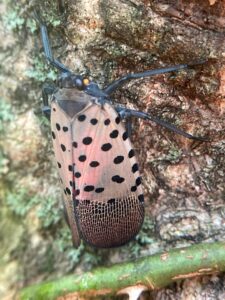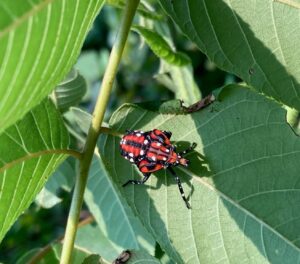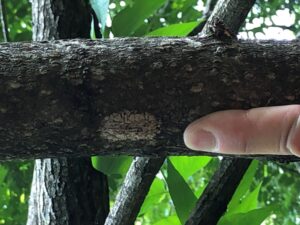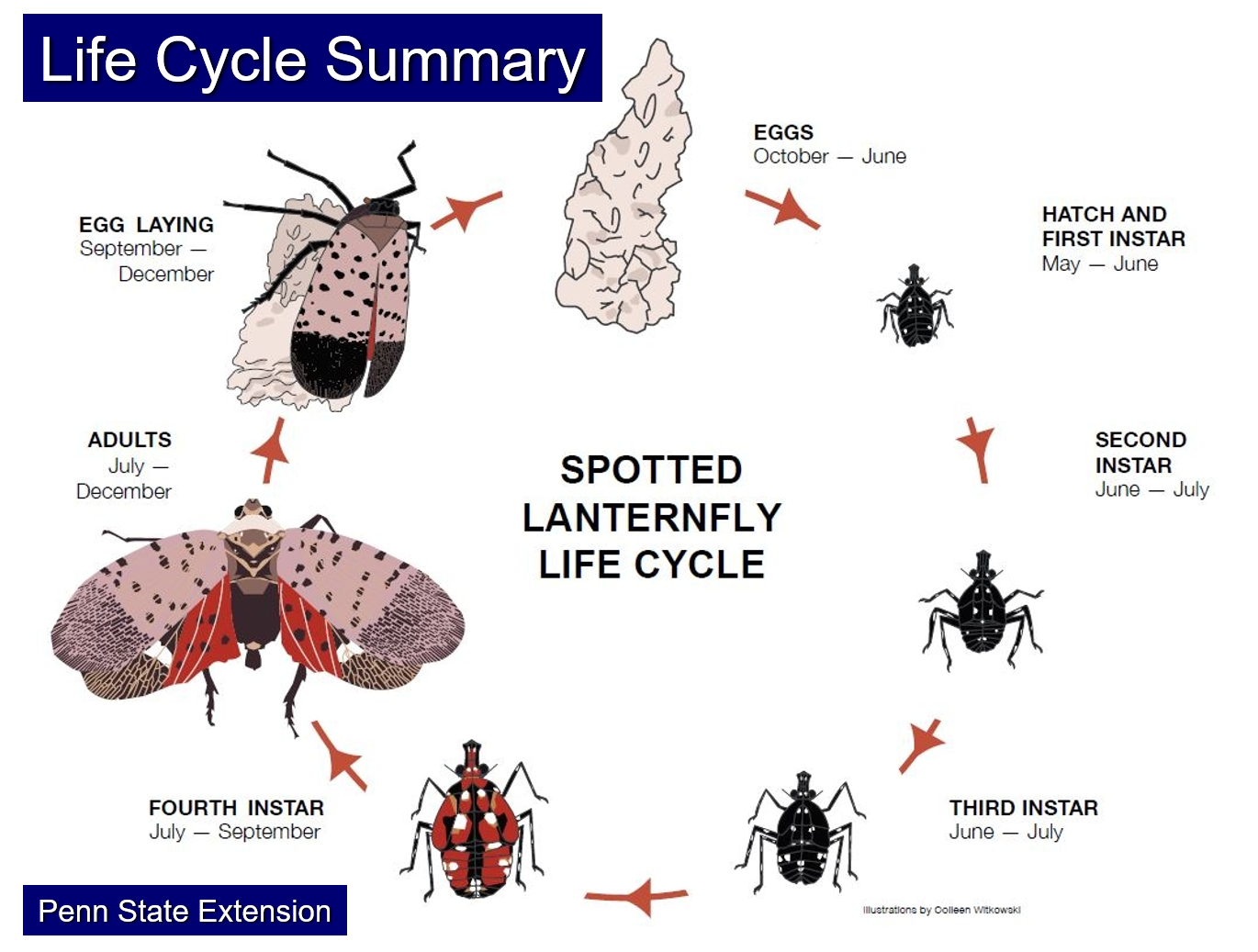Adapted from IDNR Press release and Purdue Landscape Report
The Spotted Lanternfly (SLF) has been found in Indiana
A homeowner in Vevay, IN contacted DNR’s Division of Entomology & Plant Pathology (DEPP) last week with a picture of a red immature stage near their home. DEPP staff surveyed the site and discovered an infestation in the woodlot adjacent to a few homes in the area. The site is within 2 miles of the Ohio River and the Markland Dam. DEPP and USDA are conducting an investigation to determine exactly how large the infestation is and where it could have come from, as well as how to limit the spread and eradicate the population.

Figure 1. Adult Spotted Lanternfly on tree of heaven in Vevay, Indiana; photo taken by Ren Hall (DEPP)

Figure 2. Red immature stage of SLF feeding on leaves of tree of heaven in Vevay, Indiana; photo taken by Ren Hall (DEPP)

Figure 3. Egg mass of SLF on branch of tree of heaven in Vevay, Indiana; photo taken by Angela Ruse (DEPP)
What is the Spotted Lanternfly?
The Spotted Lanternfly is an invasive planthopper native to Eastern Asia that was first introduced to the US in 2014 in Eastern Pennsylvania. It is known as a hitchhiker species and has since spread to numerous states on the East Coast. The Spotted Lanternfly has 100+ host species including grapevines, fruit trees, hardwoods (walnut, oak, maple) and ornamentals. The Spotted Lanternfly prefers to feed on tree of heaven (Ailanthus altissima) (Figures 1 & 2). The invasive insect uses its piercing, sucking mouthpart to feed on plant sap which can stress and weaken plants. If combined with other stressors, such as water stress or cold damage this may lead to plant death. See Figure 4 for the full lifecycle summary.

Figure 4. Life cycle of Spotted Lanternfly from Penn State Extension
How does it spread?
Egg masses (Figure 3) can be spread by recreational vehicles, cargo carriers and freight trains. Trade materials sold in infested areas and then shipped out of the state can also help with the spread; this includes nursery stock, outdoor furniture, lumber, etc.
What can you do?
The Indiana DNR is asking for all citizens to keep an eye out for spotted lanternfly. The bright color of both the last instars and the adults of the insect should be present at this time of the year. Anyone that spots signs of the spotted lanternfly should contact DEPP by calling 866-NO EXOTIC (866-663-9684) or send an email to DEPP@dnr.IN.gov. For more information on this or other invasive pests see the following link https://www.in.gov/dnr/entomology/pests-of-concern/spotted-lanternfly/
For more information:
Spotted Lanternfly Management Resources | Penn State Extension